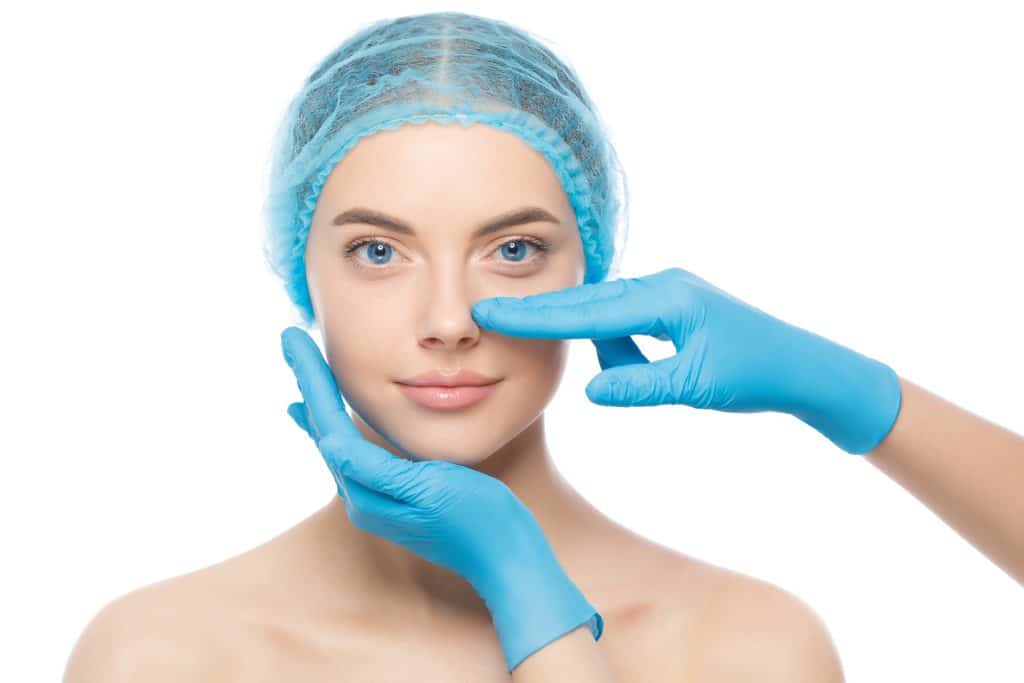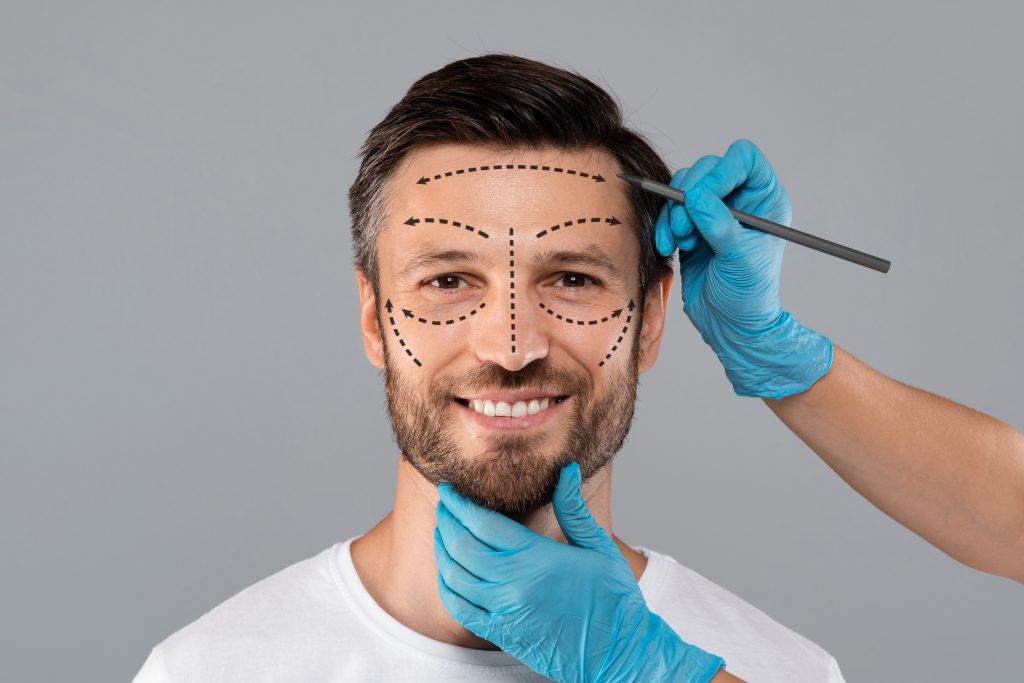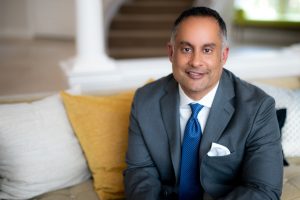Fans of classic sitcoms might still be amused by the Season 6 Seinfeld episode in which Frank Costanza and Cosmo Kramer debate the dubious marketing merits of naming their prototype of a bra for men the bro or the manssiere. However, as Dallas cosmetic surgeon Dr. Sam Jejurikar can tell you, for men who suffer from gynecomastia — the abnormal development of nonmalignant breast tissue — the condition is no laughing matter.
The word gynecomastia — Greek for “woman breast” — was introduced in the second century by the notable Greek physician, surgeon, and philosopher Galen. The condition is characterized by the development of excess localized fat, excess glandular tissue, and sometimes, excess skin in one or both breasts. The first surgical attempt to alleviate the condition is thought to have been performed by seventh-century Byzantine physician Paulus of Aegineta — known for his pioneering work in the field as “the father of cosmetic surgery” — who describes the procedure in the sixth volume of his groundbreaking encyclopedia, Medical Compendium in Seven Books.
While we’re worlds away from the cosmetic procedures performed in ancient times, Dr. Jejurikar acknowledges the problem of overabundant male breast tissue hasn’t gone away, and he adds that with the advent of increasingly advanced surgical techniques in recent years, the demand for male Gynecomastia (breast reduction) has been on the rise. In a Feb. 25, 2016, report by the American Society of Plastic Surgeons, it was revealed male breast reductions accounted for more than 40% of all breast-reduction surgeries in the U.S. According to Aesthetic Plastic Surgery National Data Bank figures, there were 28,689 male breast-reduction procedures performed nationwide in 2021.
The Causes of Male Gynecomastia: Nature or Nurture?
The generally accepted cause of male gynecomastia is an imbalance of testosterone and estrogen linked to an oversensitivity of androgen receptors in male breast tissue. Due to hormonal changes during adolescence, early onset gynecomastia may disappear on its own or respond favorably to treatment with hormone-blocking medications — which unfortunately, is not always the case for adults.
Some medical practitioners point to the overconsumption of phytoestrogens (isoflavones) found in soy products and certain herbal supplements as a contributing factor to abnormal male breast tissue growth. However, recent studies suggest the soy connection is a myth. Steroid abuse and obesity have also been associated with the condition. The debate in the scientific community may be ongoing, but no matter gynecomastia’s underlying cause, Dr. Sam Jejurikar says weight loss and exercise will not eliminate its effects in adult patients. The only viable solution to achieve male breast reduction in such cases is surgery.
Dr. Jejurikar on What Modern Male Breast-Reduction Surgery Looks Like
“Male breast-reduction surgery is usually performed under general anesthesia and takes one to three hours,” Dr. Sam Jejurikar explains on his website. While this time frame is typical, extreme cases may take longer and require more complex surgical intervention.
“In severe cases of gynecomastia, the weight of excess breast tissue may cause the breasts to sag and stretch the areola (the dark skin surrounding the nipple),” the American Society of Plastic Surgeons noted. “In these cases, the position and size of the areola can be surgically improved and excess skin may be reduced.”
An initial consultation with a cosmetic surgeon will reveal the extent of an individual patient’s condition. Dr. Jejurikar explains that once a doctor has ascertained the kind and amount of tissue to be removed, they can formulate a personalized surgical plan for the patient.
For those whose gynecomastia is composed mostly of adipose (fat) deposits, liposuction alone may suffice to remove it. Patients presenting with excess skin and glandular tissue in addition to adipose tissue will likely require a combination of surgical excision and liposuction. Again, in only the most extreme cases, cosmetic reconstruction may also be required to create the desired aesthetic outcome.
Dr. Sam Jejurikar Answers Your Male Gynecomastia FAQs
What’s the reason most men get breast-reduction surgery?
Male breast reduction can strengthen self-esteem and make those who undergo the procedure feel more attractive overall. The most commonly cited reason men get male breast reduction is to enhance their appearance: when clothed, to improve how a shirt or other garment drapes on their body; and when not clothed, to attain a more toned appearance.
Am I a good candidate for male breast reduction?
You’re a good candidate for male breast reduction if you’ve already ascertained your case can’t be corrected without surgical intervention. You should be in good general health and not have any condition(s) or be taking medications that inhibit blood clotting or healing. Ideally, you don’t drink, smoke, or take nonprescription drugs. Your outlook should be positive and your goals realistic. Your weight should fall within a normal range and your breast development should be stabilized. If you’re currently in the process of losing a substantial amount of weight, it would be best to postpone Gynecomastia or other cosmetic skin-tightening procedures until you’ve reached your goal weight and your weight is stable.
Is the procedure covered by insurance?
Generally speaking, cosmetic procedures are not covered by insurance. However, some carriers may offer compensation on a case-by-case basis. Check with your provider to see what, if any, coverage they offer.
What should I do to prepare prior to surgery?
The first thing you must do before surgery is to be totally honest with your doctor during your consultation with regard to both your health and lifestyle. Undisclosed conditions can lead to surgical complications. It’s up to you to share all pertinent information in order to ensure the best possible outcome.
Most doctors will give you a thorough medical evaluation, which may include laboratory tests, before surgery. Depending on the results, you may be required to adjust any current medications you take, and if you do smoke, your surgeon may ask you to stop for a period both before and after the procedure. You should also avoid taking aspirin, ibuprofen, and other anti-inflammatory drugs or herbal supplements before surgery because they can increase the risk of bleeding.
Since the procedure will be performed under anesthesia, you’ll need to arrange for someone to bring you home and purchase any necessary postoperative supplies in advance. It’s also a good idea to stock up on groceries. You won’t be able to go to work for a few days post-op, so make sure to arrange time off with your employer.
It’s also a good idea to put together a proactive postoperative plan with your surgeon. Find out which medication(s) will be prescribed for your recovery, make a schedule for when your dressings must be changed or removed, and if you have stitches, when they should be removed. Find out when it’s safe to return to your regular physical routine (including exercise) and when you need to schedule a follow-up visit.
What does postsurgical recovery entail for male Gynecomastia?
The most important part of your recovery is getting enough rest. During the first 48 hours of your convalescence, it’s best to have someone stay with you, both to help you get around and in the event of an emergency. You should also make arrangements to get help with chores and cooking for a few days.
Your doctor will give you specific instructions for postoperative care and it’s imperative that you follow those instructions to the letter. If you have incisions, you must avoid the use of excessive force or abrasive motion as you heal. (Get immediate medical attention if you experience any of the following: shortness of breath, chest pains, irregular heartbeat, unusual swelling.)
Will my breasts come back after the surgery?
Dr. Jejurikar says the results of male breast-reduction surgery are permanent in most cases. However, he cautions that if causative factors — including the use of certain prescription medications, steroids, and weight gain — are still in play, some excess tissue may return. Likewise, incorporating healthier lifestyle choices such as exercising, eating healthily, and moderating alcohol consumption will contribute to an improved overall outcome.
How can I find a local plastic surgeon experienced in male Gynecomastia?
If you’re in the Dallas area, you can reach out to Dr. Sam Jejurikar’s office to set up a consultation for breast-reduction surgery. Otherwise, look for a board-certified cosmetic surgeon who has experience in the procedure. Ask to see the doctor’s “before and after” patient photos. The American Society of Plastic Surgeons has an extensive online directory to help you find a qualified cosmetic surgeon near you. Also, check out reviews to see what others are saying.


 Kids who grew up in the ’80s are likely familiar with candy buttons — row after row of tiny candy dots stuck to a roll of paper you chewed off one at a time. Back in the day, that’s pretty much what hair transplants looked like, too — row after row of hairy, suspect-looking punctuation marks gathered in a dubious runway formation with embarrassing sections of scalp peeking through. While hair plugs were standard operating procedure in the last century, Dallas-based cosmetic surgeon
Kids who grew up in the ’80s are likely familiar with candy buttons — row after row of tiny candy dots stuck to a roll of paper you chewed off one at a time. Back in the day, that’s pretty much what hair transplants looked like, too — row after row of hairy, suspect-looking punctuation marks gathered in a dubious runway formation with embarrassing sections of scalp peeking through. While hair plugs were standard operating procedure in the last century, Dallas-based cosmetic surgeon




